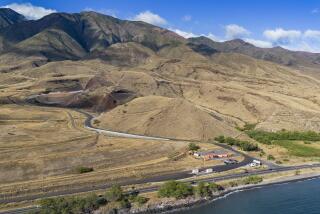ORANGE COUNTY PERSPECTIVE : Not Happy, but at Least an Ending
The sad story of the attempt to clean up the McColl dump in Fullerton will not have a completely happy ending. But the chance that it may have any ending at all is cause for one cheer, at least. The residents who have endured years of inaction deserved better, but they are getting a resolution at last.
The U.S. Environmental Protection Agency, which bears much of the blame for delays, has thrown in the towel on cleaning up McColl and has decided to merely cover over the poisonous sludge in the ground. That’s a major retreat from its position of 1989 that the best method was excavating and burning the waste.
To reverse course, it took four years in which nothing was done to help the residents living near the dump. But that’s no surprise when it comes to McColl, where the talk has been so great and the action so little for a decade as to be worthy of a Charles Dickens novel.
The 22-acre site was used as a dumping ground for oil refinery wastes from 1942 through 1946, Orange County’s rural days. Later, nearby oil drilling operations produced mud that was used to cover the oily sludge. When the federal government created the Superfund list of the most toxic waste sites in the nation in 1980, McColl was on it. Thirteen years have gone by and still no cleanup.
In 1985, waste from the site was three days away from being trucked to a Kern County landfill. But a court order blocked the trucks because the EPA had done an insufficient environmental review.
The 1989 plan to remove and incinerate the waste was dropped when the EPA decided it would take too long and threaten the neighborhood with sulfur dioxide fumes.
The EPA tabbed five oil companies to pay for the cleanup of McColl. The companies not surprisingly wanted to spend as little as possible, and in fact the EPA’s latest version of a McColl fix is close to what the oil firms proposed a decade ago. More than $20 million has already been spent on studies and experimental toxic waste disposal, and the latest EPA plan could cost $80 million and will take at least six more years to complete. The oil companies are negotiating with the agency over their share of the containment plan.
The history of McColl dramatizes the difficulty of the toxic waste problem. Environmental laws changed, the poisonous stew of chemicals proved difficult to treat and the cost was bound to be high. But the people living near the dump deserved faster action from the EPA.
More to Read
Sign up for Essential California
The most important California stories and recommendations in your inbox every morning.
You may occasionally receive promotional content from the Los Angeles Times.









